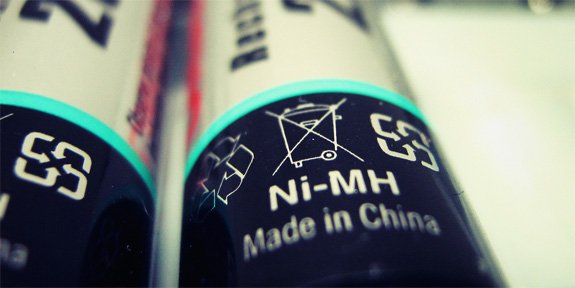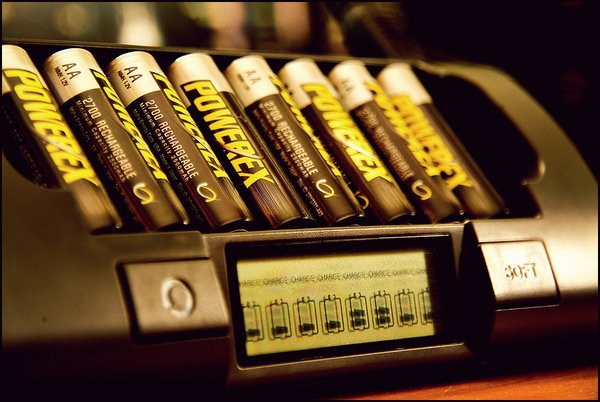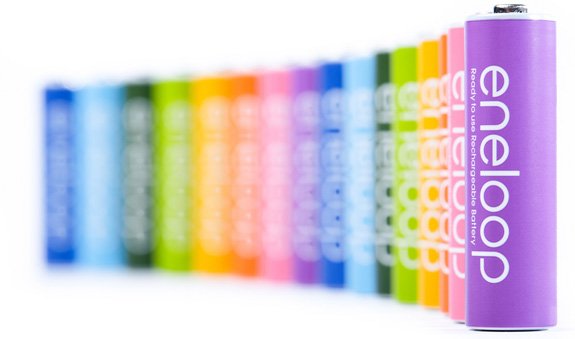Get the Most Out of NiMH Rechargeable Drill Batteries
If you’ve got few AA and AAA devices in your life, you’ve probably at least considered investing in some rechargeable batteries. NiMH cells have soared in popularity as devices have become increasingly wire-free, and thus battery-dependent. And that’s a good thing. Rechargeable batteries are a great idea all around: they save you the hassle and money of repeatedly buying throw-aways, and also keep those single-use cells out of the landfills.

How NiMH batteries work
A NiMH battery consists of two metal strips, which act as the positive and negative electrodes, and an insulating foil separator that goes between them. This delicious energy sandwich is coiled up and placed into a battery canister along with an electrolyte liquid. The positive electrode is typically made of nickle, the negative of a metal hydride, hence the name “NiMH” or “Nickle-Metal Hydride.”
Put that dead MILWAUKEE M18 battery into a charger, though, and the electrical current reverses the discharge process. Electrons are pulled out of the positive electrode, causing it to oxidize and release hydrogen. At the same time, electrons are put back into the negative electrode, and it absorbs hydrogen. In the case of an extreme overcharge, any excess hydrogen gets vented out the top of the battery—look closely at the cap on your rechargeables and you’ll see the vents.

How to keep your batteries healthy-the facts and fiction
In talking about rechargeable batteries, there are two terms that get debated endlessly: “memory effect” and “voltage depression.” With even a quick search, you’ll find all sorts of conflicting information on both phenomena, but few scientific tests to confirm them. Complicating the issue further, these two problems make for excellent scapegoats, and are often blamed when batteries suffer any kind of failure. So what are these issues, and do you need to worry about them?
Do not have a “memory effect” —it’s a issue only found in Nickle Cadmium batteries , and even then it’s difficult to replicate.
“Voltage depression,” on the other hand, can happen to NiMH batteries, though it’s questionable how noticeable it is . When a battery is repeatedly overcharged, small crystals form on the electrodes, inhibiting their ability to complete that important chemical reaction. As a result, the battery’s voltage drops. And even though that drop shouldn’t affect the battery’s capacity, it can cause a device to think the Paslode 404717 battery is losing charge faster than it truly is.
For both conditions, the standard advice is to discharge your batteries completely, then recharge them. And while that is a sound treatment for both “memory effect” (in nickle cadmium batteries) and “voltage depression,” it’s also an easy way to damage your NiMHs—over discharging can cause “ pole reversal ,” which permanently damages a battery. Some electronics are made to prevent this, shutting down before reversal can happen, but simpler devices like flashlights often don’t.

So how should you actually handle your NiMH batteries?
Past all the confusion, there is some very solid, consistent advice about getting the most out of your batteries.
- Be prepared to replace them, eventually. NiMH batteries don’t last forever, and though time and use they will stop working. Thank them for saving you money, recycle them, and move on.
- Buy a good charger. You don’t have to spend a fortune on the best charger available, but make sure you get a “smart” charger, one that electronically monitors the recharge process and prevents overcharging. Not only is it better for the batteries, it will use less power than cheap chargers, which often rely on a simple timer mechanism.
- Remove the batteries when the recharge is complete. Unnecessary time on the charger means more “trickle” power is used to keep them charged—so more wear and tear and more wasted power.
- Don’t regularly discharge your batteries completely in an attempt to make them last longer. Despite all the advice to the contrary, complete discharge can actually shorten their lifespan.
- Store your NiMH batteries at room temperature in a dry location. Excessive heat can definitely damage your Dyson DC16 batteries and cause them to lose charge faster.
- Consider using low self-discharge battery model. Eneloop is the best known brand of these batteries, which unlike most NiMH cells don’t lose power as quickly when sitting on a shelf. If your rechargeables are ready to go, you’re less likely to fall back on the throwaways.